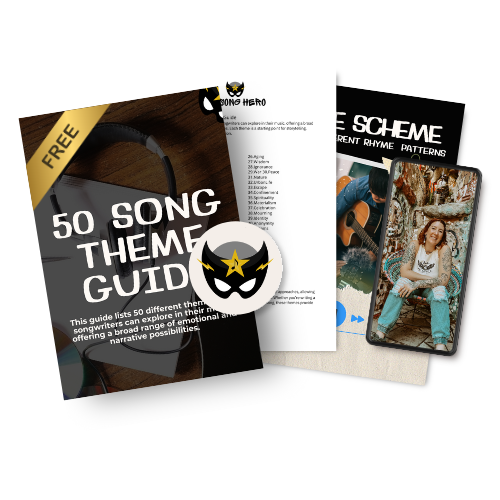How to Write a Catchy Chorus: A Beginner's Guide
How to Write a Catchy Chorus:
A Beginner's Guide by
Hit Song Hero
Not sure how to start writing a chorus that sticks with listeners long after the song ends? You’re not alone!
The chorus is the heart of your song. It’s the part your audience will sing along to, the hook they’ll remember, and the central message of your music. But creating a great chorus can feel overwhelming for beginners. In this guide, we’ll break down chorus-writing into simple, manageable steps to help you find your unique songwriting groove.
What’s the Purpose of a Chorus?
The chorus is the "big idea" of your song—the key takeaway. It’s where you capture the main theme in a few memorable lines or phrases.
Think of the chorus as the song’s anchor. It gives your listener a sense of what you’re expressing and keeps them connected to the overall message. Ancient Greek theater used a “chorus” to summarize the story for the audience, and we’re doing a similar thing today in music: helping listeners quickly understand and connect with the song’s emotional core.
Let’s jump into a few beginner-friendly steps to help you craft a chorus that will resonate with your audience.
Step 1: Define Your Song’s Big Idea
Start by writing a simple sentence that sums up what your song is about. Think about what you want listeners to feel, think, or remember when they hear your chorus.
For instance, if your song is about finding peace in a busy world, you could write, “I want my chorus to remind listeners to slow down and enjoy the moment.” This focus will guide both your lyrics and melody choices as you develop the chorus.
Step 2: Play with Chords and Melody
Experiment with a few different chords to see which ones capture the mood you’re aiming for. Often, choruses have a melody that stands out from the verses—this contrast makes them memorable.
Try using notes that sit higher in your vocal range, or explore a rhythm that feels bolder than the verses. This difference signals to listeners that they’ve reached a pivotal part of the song, adding emotional impact.
Step 3: Craft the Lyrics
Choruses are often short and memorable, so aim for simple, direct lyrics that emphasize your song’s message.
A good tip is to repeat the most important line, which usually falls at the beginning or end of the chorus. This way, listeners know exactly what your song is about. For example, in a song about hope, you might repeat, “We’ll rise again,” or something equally powerful.
Step 4: Add a Catchy Hook
A hook is the thing that listeners can’t get out of their heads—it could be a catchy line, a vocal riff, or even a rhythm. Think of the “yeah, yeah, yeah” in The Beatles’ She Loves You. Hooks can be a game-changer in chorus writing.
Try experimenting with simple yet memorable lines or sounds that naturally fit with your lyrics.
Step 5: Focus on Rhythm
A great chorus often has a distinct rhythm that sets it apart from the rest of the song. This rhythmic contrast catches listeners’ attention and can make your chorus feel more exciting and dynamic.
Don’t be afraid to play around with repetition and pauses—sometimes less is more, and a well-placed pause can make your chorus even more impactful.
Step 6: Repeat and Structure Your Chorus
Repetition is your friend! Listeners tend to connect with something they hear multiple times, so use repetition wisely.
A classic structure might look like:
Lyric 1 + Melody 1
Lyric 1 + Melody 1 (repeated)
Lyric 2 + Melody 2
Lyric 1 + Melody 1 (return)
This structure makes your chorus easy to remember without feeling redundant.
Step 7: Keep It Simple
As a beginner, it’s easy to feel like your chorus needs to say it all, but simplicity is often what makes a chorus powerful. If something doesn’t quite fit or feels too wordy, cut it out. Stick to the essence of your message—this will give you a more focused, impactful chorus.
Conclusion
A great chorus doesn’t happen by accident, and it doesn’t have to be complicated. By experimenting with these steps and following your instincts, you’ll find your voice as a songwriter and start creating choruses that stick.
Remember: a well-crafted chorus can make or break a song. So, give it the time and attention it deserves, and don’t be afraid to write, revise, and rewrite.
Bonus: Free Resources for Aspiring Songwriters
At Hit Song Hero, we believe in supporting aspiring songwriters with practical tools. Download our Pro Songwriting Launch Kit for free to get access to workbooks, templates, and tips that will help you master the art of songwriting.








